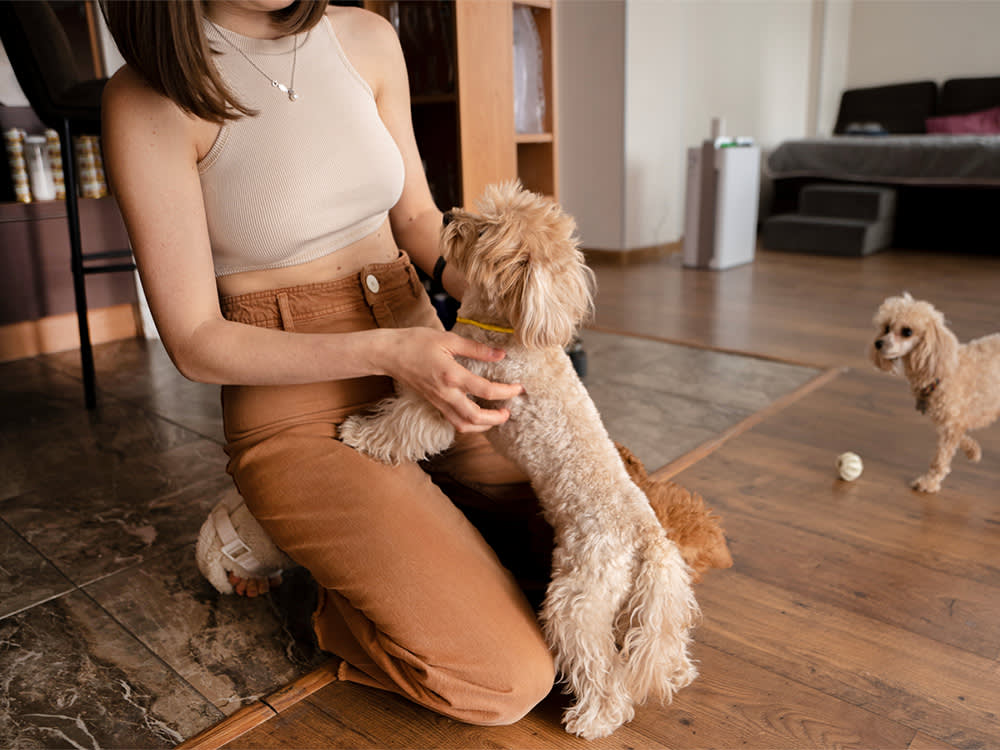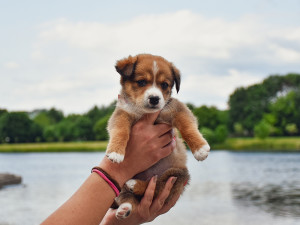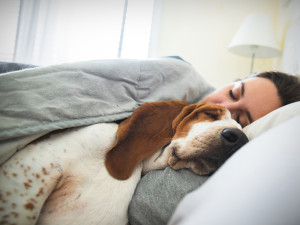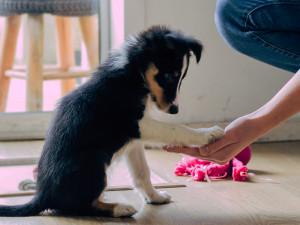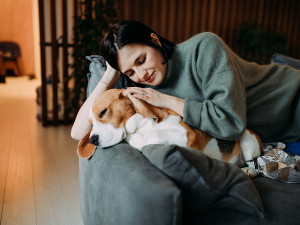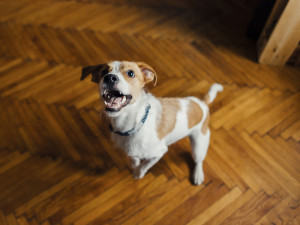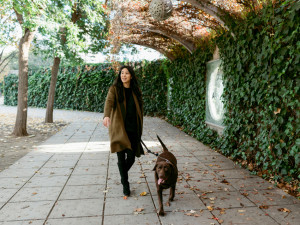10 Signs Your Dog Has Imprinted on You
This has nothing to do with a werewolf named Jacob in a series called Twilight, but here’s what it is all about
Does your dog only have eyes for you? Do they look to you for guidance more than they do other members of the family? According to The Internet, those might be signs your dog has imprinted on you. But we wanted to find out for sure. So we checked in with Dr Valli Parthasarathy, a board-certified veterinary behaviourist and co-founder of Synergy Veterinary Behavioropens in new tab to understand what imprinting actually is.
What does it mean when a dog imprints?
“Imprinting is a special type of learning that is rapidly occurring and age-dependent,” Dr Valli tells Kinship. “Imprint periods are often very discretely defined periods of development and if that period is missed, then that learning will not take place.”
Imprinting is most closely associated with precocial species. These are birds, cattle, sheep or other species that are hatched or born with their sight, hearing and other senses fully formed. Take a baby chick, for example. They enter the world able to immediately move around their environment, which means they need to figure out who their parents are very quickly so they know who to model their behaviour after. As a result, a chick will imprint on the first moving thing it sees and will follow it around exclusively. Ideally, that moving thing is its mother. But it could be, say, a lawnmower. Given the magnitude of this first attachment, appropriate imprinting is critical for these species.
Can dogs imprint on people?
Dogs are an example of an altricial species (as are cats and humans). Their senses are not fully developed at birth and they can’t move about their environment right away, so their impressionable periods work a little differently. Dr Valli explains.
“Dogs don’t imprint in the same way that precocial species do. However, they do have sensitive periods in which their brains are primed to learn about the individuals around them. Typically this occurs between 3–12 weeks of age. During the early part of this period, they form their intra-dog relationships and learn about their immediate environment. They also learn dog-to-dog social skills such as bite inhibition and canine social signalling. Then, from weeks 7–12, they are primed to learn about the larger world, including people and how to interact with them.”
It’s the latter part of this phase when you are most likely to make an everlasting impression on your pup. It may also be when your dog starts to view one person as their primary caretaker and all-around BFF. So in a more general (but less scientific) sense, this is when a dog can ‘imprint’ on a person and start to pick up cues from them.
But what if you get your dog later in life when they’re past this initial rapid learning phase? “With dogs, there’s some flexibility around when learning occurs and when social bonds can be made,” says Dr Valli. “Dogs can still be introduced to new things and people after the initial socialisation period. However, it may be a bit more difficult or take more time, so patience is key.”
How long does it take for a dog to imprint on a human?
As Dr Valli says, the socialisation period can vary between dogs. They will likely imprint between the ages of 3–12 weeks, as previously mentioned, but every dog is different, so remember to be patient with your pup.
What are the three stages of puppy imprinting?
1. Canine imprinting
This stage first begins when the dog is between 2–3 weeks old and lasts until they are seven months. This period is when a puppy is learning and observing other dogs, especially their mother, so that’s why it’s important for puppies to stay with their mothers at least until they are eight weeks old.
2. Human imprinting
This stage usually happens when puppies are between 7–12 weeks old. It means they’ve chosen one human in their family with whom to bond. Sometimes, they will also choose another animal in the house, too. At this stage, they are learning how to interact with living beings that are different from them.
3. Fear imprinting
This is when puppies are most likely to develop intense fears of even seemingly minor factors. Make sure you keep training and the rest of their environment positive because this is when your pup could become scared or anxious, caused by specific triggers.
10 signs your dog has imprinted on you
At this point, you’re probably wondering how you’d know if your pup made that extra special bond with you. Here are a few indicators to look for:
They follow you around closely.
They mirror your behaviours.
They follow your commands more readily than they do other people’s.
They check in with you frequently when in new environments or situations.
They are constantly seeking out your companionship and affection.
They make eye contact with you and are happy to see you.
They snuggle with your belongings when you’re not around.
They can tell if you are OK or not.
They take care of you.
They like to snuggle and hang around in your things, like piles of your washing.
Can your dog be too attached to you?
It feels good to be your pup’s numero uno. But is there a potential downside to this attachment thing? Dr Valli says it can vary by dog.
“If a dog has a strong attachment to you, that can be beneficial or problematic depending on the individual dog,” she says. “For example, a dog with a strong interest in an individual may be more willing to come to that person when asked, engage with them in training and spend more time with them. However, in some dogs, a strong attachment could be associated with distress when that person is not present.”
Common dog imprinting behaviours
If your dog has imprinted on you, you will notice that they will act quite attached to you. You might not be able to go far without them following you around (hello, bathroom trip for two?) and they might experience separation anxiety or similar anxious behaviours when you are not with them.
If you have concerns about separation anxiety or other signs that your dog struggles when you’re not around to show them the ropes, check in with your regular veterinarian or a veterinary behaviourist for advice on managing their behaviour.
Why does my dog follow me everywhere?
If you have a little shadow, this likely means your dog trusts and loves you deeply. You make them feel safe and cared for. It might be annoying that they are trailing you just about everywhere you go, but you’re their person and that has to feel good.
Why does my dog lick me?
Dogs lick their humans for many different reasons. This is a way of grooming you and expressing their love, but it’s also how they might get your attention or soothe themselves if they are feeling stressed. Or maybe you just worked out and your salty, sweaty skin tastes good to them (probably not the post-workout routine you were looking for, but hey).
Why does my dog sleep by my feet?
Remember that bit about how dogs feel more safe with a certain person in their family? If your pup is snoozing at your feet, this means they feel secure with you. You mean safety and comfort to them.
Why does my dog go crazy when I come home?
Your dog is excited by your presence, and you make them happy. So, when you come home after being gone (even if you were just running to the supermarket for five minutes), they are overwhelmed by the fact that you’re back with them.
Frequently asked questions
What does it mean when a dog imprints?
When a dog imprints on you, this means they consider you to be a safe person who makes them feel secure. They might decide this about you within the first 12 weeks of their life, depending on when you brought them home.
How do you know if a dog has imprinted on you?
When a dog imprints on you, you might notice that they follow you around the house, mirror your behaviour, consider themselves to be your caretaker and nestle among your things. When you come home after being gone, they are super-excited to see you. There are other signs (see above), but you’ll be able to tell pretty quickly if they consider you to be their special person.
How long does it take for a dog to imprint on a human?
It can take up to 12 weeks for your puppy to imprint on you. Usually, the human imprinting stage starts at seven weeks. Before that, they are in the canine imprinting stage, when they are observing behaviours of other dogs, especially their mother.
At what age do dogs stop imprinting?
Dogs stop imprinting around four months old after they’ve completed the three stages of imprinting: canine, human and fear.
How do dogs choose their favourite person?
A puppy who’s imprinting might choose their favourite person because that person is the one providing them the most care during their early development. That person offers them security and is someone they trust.
Can dogs change their favourite person?
Depending on life circumstances and how much time a person spends with a dog, a pup’s bond with them can strengthen. So, for example, if your partner was always your dog’s go-to person because they worked from home and cared for the dog more, but you work from home now too, this extra time with your dog can help strengthen your relationship.
Do dogs bond when they sleep with you?
Although many trainers (and allergists) might not recommend that you let your dog sleep in your bed, experts now suggest that sleeping with your dog can increase your bond with your pup.
“I love that we’re reversing the question,” Dr Dana Varble, the chief veterinary officer for the North American Veterinary Community told CNN in 2021opens in new tab. “In general, it is a very good thing for animals to sleep with their people.” She added: “Dogs and cats who are more closely bonded with their humans get additional health benefits, including increases in beneficial neurotransmitters such as oxytocin and dopamine, the feel-good hormones.”
What is a velcro dog?
The term ‘velcro dog’ is used to describe a dog who stays close to you or may also be described as ‘clingy’. The latter has negative connotations; a dog who sticks to you like velcro is really just comforted by your presence.
